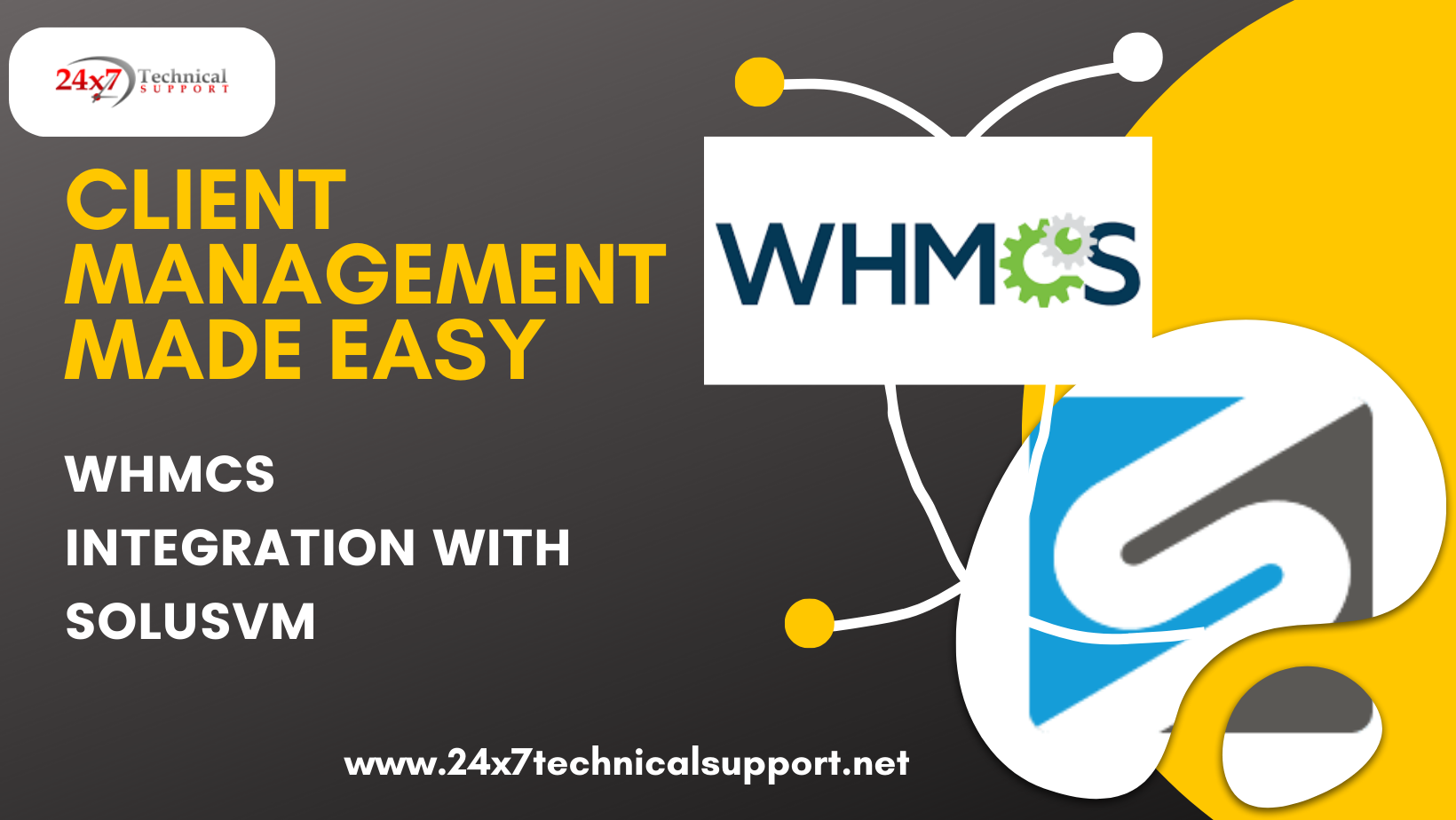
Introduction
Managing clients efficiently is a crucial aspect of running a successful web hosting business. The process involves various tasks, from billing and provisioning to customer support and resource allocation. To streamline these operations, many hosting providers turn to powerful tools like WHMCS and SolusVM.
Understanding WHMCS

WHMCS is an all-in-one client management platform designed specifically for web hosting businesses. It automates numerous tasks, including billing, invoicing, ticketing, and provisioning, enabling hosting companies to focus more on providing top-notch services to their clients. With WHMCS, web hosting businesses can efficiently manage their clients, products, and services from a single centralized platform.
Exploring SolusVM

SolusVM, on the other hand, is a powerful virtual server management solution. It allows hosting providers to create and manage virtual machines with ease, enabling them to offer flexible VPS (Virtual Private Server) hosting services to their clients. SolusVM comes with a user-friendly interface that simplifies complex server management tasks, making it an ideal solution for both beginners and experienced hosting providers.
Benefits of WHMCS Integration with SolusVM
Integrating WHMCS with SolusVM brings forth a plethora of advantages for web hosting businesses:
- Streamlined Client Management Process: The integration ensures seamless coordination between WHMCS’s client management capabilities and SolusVM’s virtual server management features. This streamlines the overall client management process, enhancing operational efficiency.
- Automated Billing and Invoicing: WHMCS automates billing and invoicing for hosting services, ensuring clients receive accurate invoices and reminders on time. This automation minimizes manual errors and saves time for both the hosting company and its clients.
- Enhanced Server Provisioning and Resource Allocation: The integration allows clients to easily order, upgrade, or downgrade their VPS hosting plans. This feature empowers clients with more control over their resources and eliminates the need for constant administrative involvement.
Step-by-Step Guide to WHMCS and SolusVM Integration
To integrate WHMCS with SolusVM successfully, follow these steps:
- Prerequisites for Integration: Ensure that you have a compatible version of WHMCS and SolusVM installed on your server. Additionally, have the necessary credentials and API keys ready for both platforms.
- Installing and Configuring SolusVM on WHMCS: Begin by installing the SolusVM module in WHMCS. Then, configure the module settings to establish a connection between the two platforms.
- Setting Up Client Packages and Pricing: Define various VPS hosting packages with different resource allocations and pricing. Assign these packages to clients based on their requirements.
Customizing Client Experience
Creating a user-friendly and branded interface for clients is essential for a positive customer experience:
- Customize the client portal with your company logo and colors.
- Set up support features, such as a knowledge base and ticketing system, to address client queries effectively.
Security and Maintenance

Ensuring data security and regular maintenance are crucial for the smooth functioning of your integrated system:
- Implement robust security measures to protect sensitive client data.
- Regularly update both WHMCS and SolusVM to access the latest features and security patches.
Troubleshooting Common Issues
While the integration process is relatively straightforward, users might encounter some common issues:
- Address potential conflicts between other WHMCS modules and SolusVM.
- Troubleshoot client access problems and API connection issues.
Conclusion
WHMCS integration with SolusVM is a game-changer for web hosting businesses seeking to enhance their client management capabilities. The seamless coordination between the two platforms streamlines tasks, automates billing, and offers clients more control over their hosting resources. By embracing this integration, hosting providers can stay ahead in a competitive market and deliver a superior hosting experience to their clients.